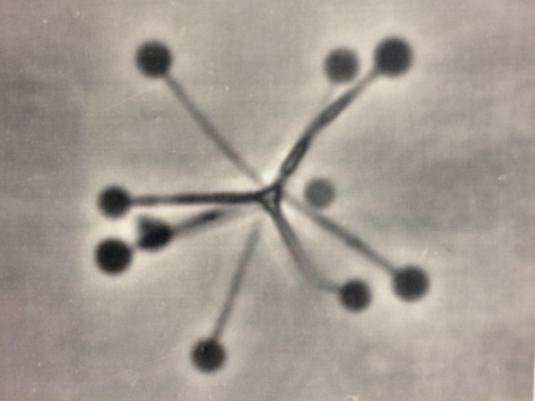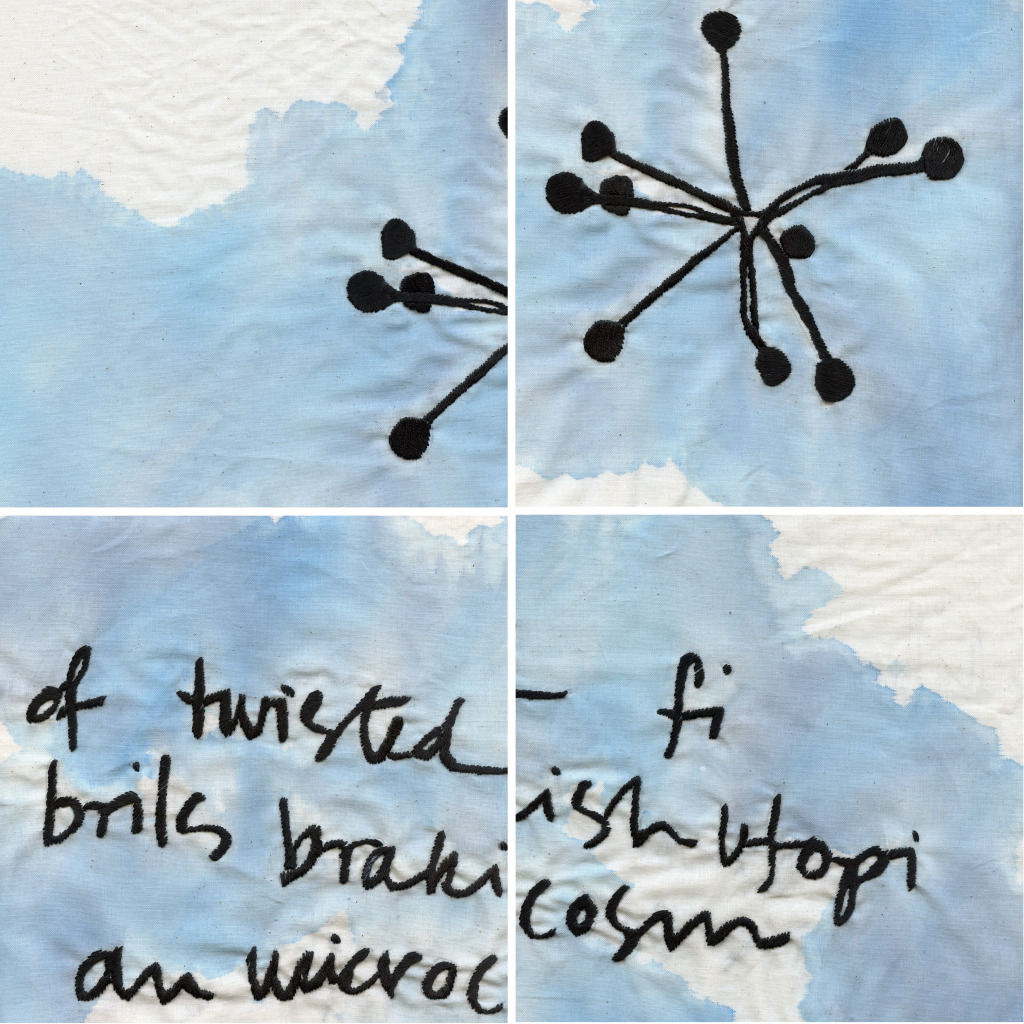Planctomyces bekefii
About this microbe:
It looks a little like the head of a dandelion before the seeds blow away, but it’s a type of planctomycete: “an unusual but widely distributed group of budding bacteria.” Specifically, it’s a Planctomyces bekefii, a species first observed in the 1920s in Lake Lágymányosi in Budapest, Hungary. It was discovered by Nándor Gimesi, a teacher in the Buda Saint Emeric Gymnasium of the Cistercian Order, and named for that Order’s founder, Remigus Békefi. It was originally misidentified, because its distinctive feature, that it typically occurs in rosettes composed of spherical cells attached to non-cellular stalks “radiating toward a central phase-light granule,” made it look more like a fungus than a bacterium. We now know that it is widely distributed in freshwater ponds and lakes in temperate climates worldwide, and that it “blooms” intermittently, in late summer or early fall.
Sources:
Jean M. Schmidt and Mortimer P. Starr, “Some Ultrastructural Features of Planctomyces bekefii, Morphotype I of the Blastocaulis-Planctomyces Group of Budding and Appendaged Bacteria,” Current Microbiology 4 (1980): 189-94.
John A. Fuerst, “The planctomycetes: emerging models for microbial ecology, evolution and cell biology,” Microbiology 141 (1995): 1493-1506.
Zsuzsanna Langó, “‘Who Has First Observed Planctomyces’ (or Data to the History of Planctomyces bekefii),” Acta Microbiologica et Immunologica Hungarica 52:1 (2005): 73-84.
Image: Naomi Ward.



